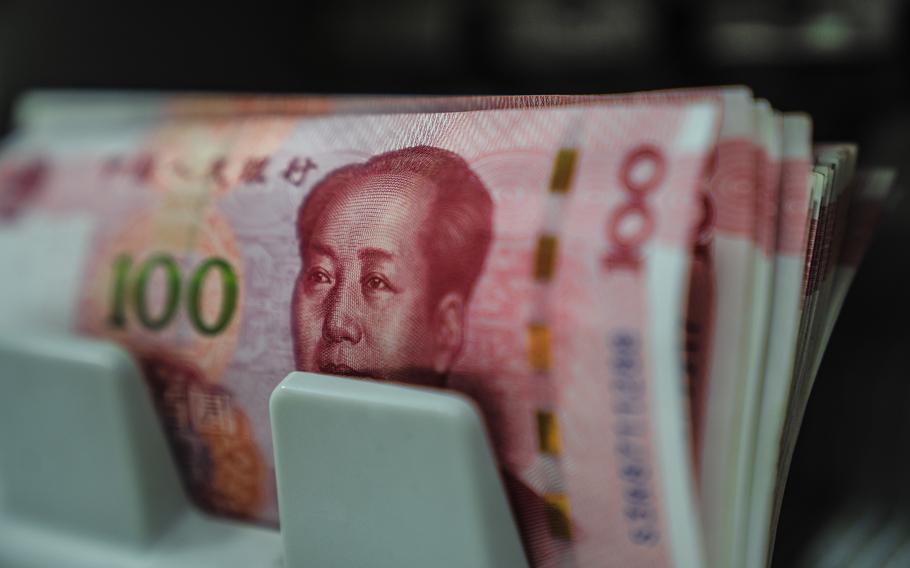
Chinese one-hundred yuan banknotes. (Lam Yik/Bloomberg)
Tighter U.S. sanctions have curbed the flow of yuan to Russia, forcing local lenders to borrow the currency at a higher rate from the central bank.
China became Russia’s main trade partner after the Kremlin was severed from Western markets by penalties unleashed in response to the 2022 invasion of Ukraine. Amid Moscow and Beijing’s “no-limits friendship,” around $240 billion of imports and exports are now priced almost entirely in yuan.
But there’s growing evidence Chinese banks are afraid of being penalized for indirectly funding Russia’s war machine under the latest, expanded U.S. sanctions announced in June. Payment issues were at the top of the agenda when Russia President Vladimir Putin met with Chinese President Xi Jinping.
As yuan liquidity in Russia dries up, firms are turning more and more to using yuan swaps with the Bank of Russia - operations that were previously viewed as an expensive last resort. The average daily volume of yuan borrowed via the swaps jumped to 20 billion yuan ($2.8 billion) in August compared with 10 billion yuan in June, Bloomberg calculations using the latest central bank data show.
Russian firms are increasingly making payments through “friendly” former Soviet republics like Kazakhstan and exporters are able to keep more of their revenues outside Russia after mandatory repatriation rules were eased.
Sberbank - Russia’s biggest bank - sees “no prospect” of the situation with yuan liquidity improving dramatically, the Interfax news service cited Taras Skvortsov, senior vice president and head of its financial division, as saying on Aug. 8.
What Bloomberg Economics Says....
“Russia’s yuan money market hasn’t recovered, which suggests that Russian banks are struggling to find reliable workarounds. The Bank of Russia is stepping into the gap likely left by China’s private bank branches in Russia. Higher yuan-based costs could mean lower trade volume with China, Russia’s main source of imports. If China’s exports to Russia - whether direct or transshipped - decline in the second half of the year, Washington will be able to claim a major win in its sanctions war on Russia, and the yuan’s ability to serve as an alternative to the dollar will be further in question.”
— Alex Isakov, Russia economist
The U.S. widened the parameters for determining whether to impose secondary sanctions by broadening the definition of Russia’s military-industrial base. Last month, National Security Adviser Jake Sullivan said the U.S. is preparing new sanctions on Chinese entities that support Russia’s war in Ukraine, hinting that banks may be in the cross-hairs.
That warning has made many Chinese lenders wary of transferring yuan, and in some cases froze transactions for months, according to Vladimir Chernov, an analyst at the Freedom Finance Global brokerage.
As rates for borrowing yuan overnight spiked beyond 20%, the Bank of Russia tripled the maximum volume permitted for yuan swaps to 30 billion yuan. While that cooled the cost of funding in the Chinese currency, rates are significantly higher than before the June sanctions.
With assistance from Natasha Doff.
(c) 2024, Bloomberg L.P.